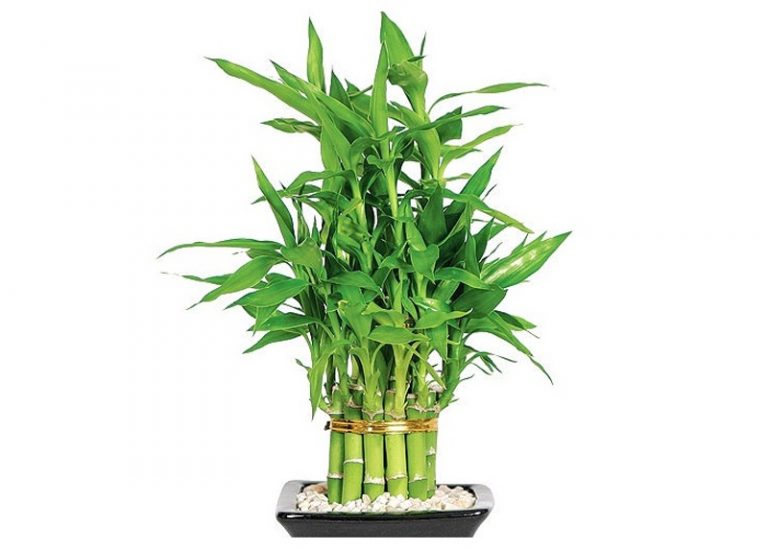Lucky Bamboo scientifically known as Dracaena sanderiana (also called Dracaena braunii) is a perennial herb belonging to the family Asparagaceae. Lucky Bamboo is not actually bamboo and there isn’t any well-known reason behind its common name. It grows easily either in water or in soil and the canes of the plant has a similar appearance to real bamboo stalks. Like most plants belonging to the Dracaena family, they dislike harsh sunlight and no light locations. The plant is native to Cameroon, Gabon, Central African Republic, and Republic of the Congo, Democratic Republic of the Congo and Angola. It is sold worldwide as an ornamental plant.
Few of the popular common names of the plant are Sander’s dracaena, ribbon dracaena, curly bamboo, Chinese water bamboo, friendship bamboo, Goddess of Mercy plant, Belgian evergreen and ribbon plant. The plant was named after the German–English gardener Henry Frederick Conrad Sander (1847–1920). The common name lucky bamboo refers to the stems which resemble bamboo canes although the two plants are not closely related. Keeping lucky bamboo inside houses and business places are supposed to bring happiness and prosperity. It is a very stubborn plant and is rather difficult to destroy it. The stems can be trained to take on a number of forms including spirals, braids, hearts, and loops.
| Name | Lucky Bamboo |
|---|---|
| Scientific Name | Dracaena sanderiana |
| Native | Cameroon, Gabon, Central African Republic, Republic of the Congo, Democratic Republic of the Congo, Angola. It is sold worldwide as an ornamental plant. |
| Common Names | Sander’s dracaena, ribbon dracaena, lucky bamboo, curly bamboo, Chinese water bamboo, Goddess of Mercy’s plant, Belgian evergreen, ribbon plant, Friendship Bamboo, Water Bamboo |
| Name in Other Languages | Chinese: Yin ye long xue shu English : Chinese water bamboo, Friendship bamboo, Lucky bamboo, Ribbon plant, Water bamboo, Belgian evergreen French: Bambou d’eau, Bambou porte-bonheur, Canne chinoise, Canne de Chine, Dracaena de Chine, bambou chinois, bambou de la chance, dracaena à rubans jaunes, dragonnier de Sander, plante à ruban German: Panaschierter Drachenbaum Japanese : Dorasena sanderiaana (ドラセナサンデリアーナ), ginyou-sennen-poku (ギンヨウセンネンポク) Russian: Dratsena sandera Spanish: Dracena de Camerún |
| Plant Growth Habit | Small to medium sized, slow-growing, herbaceous perennial |
| Growing Climates | Requires bright, ventilated areas. It tolerates dry air and does not require constant spraying |
| Temperature | From 16-24°C (60-75°F). |
| Soil | Rich, well-watered, well-drained soil |
| Light | Bright indirect light |
| Plant Size | 1.5 meters (5 ft.) tall. Indoor height rarely exceeds 90 cm (3ft). |
| Water Level | At least 5cm (2 in) |
| Stem | Erect, bright green, cane-like stem with terminal, corkscrew twist |
| Leaf | Slightly twisted leaves of grey-green colour, with a length of which is up to 15-25 cm (6-10 in) long and 1.5-4 cm (1-2 in) broad at the base. The foliage is solid green but varieties are available that feature variegated foliage with stripes of white to yellow. |
| Flower | Rarely flower indoors |
| Propagation | By stem cuttings or tip cuttings |
| Other Facts |
|
| Precautions |
|
References:
https://en.wikipedia.org/wiki/Dracaena_sanderiana
https://gd.eppo.int/taxon/DRNSA


